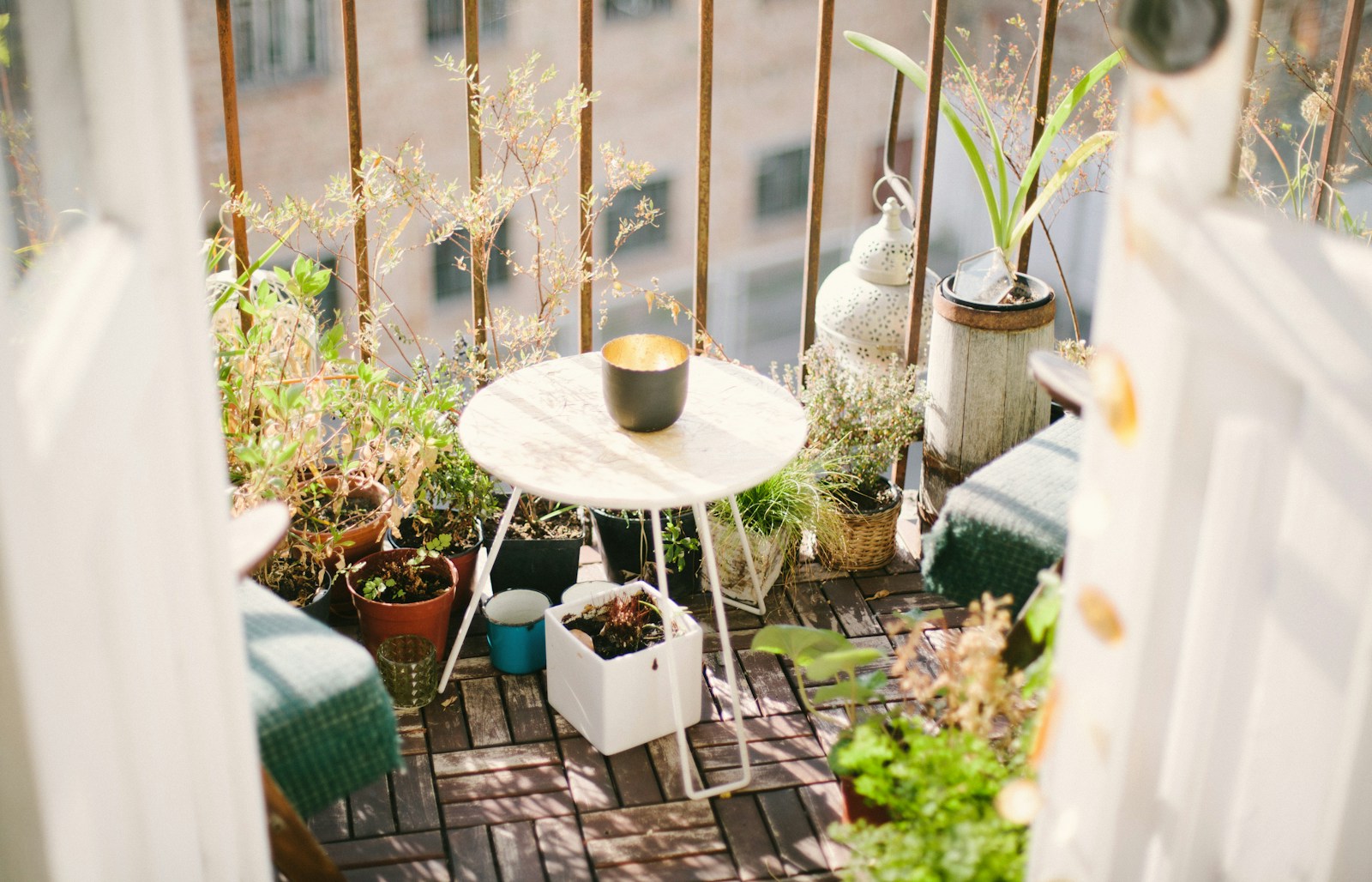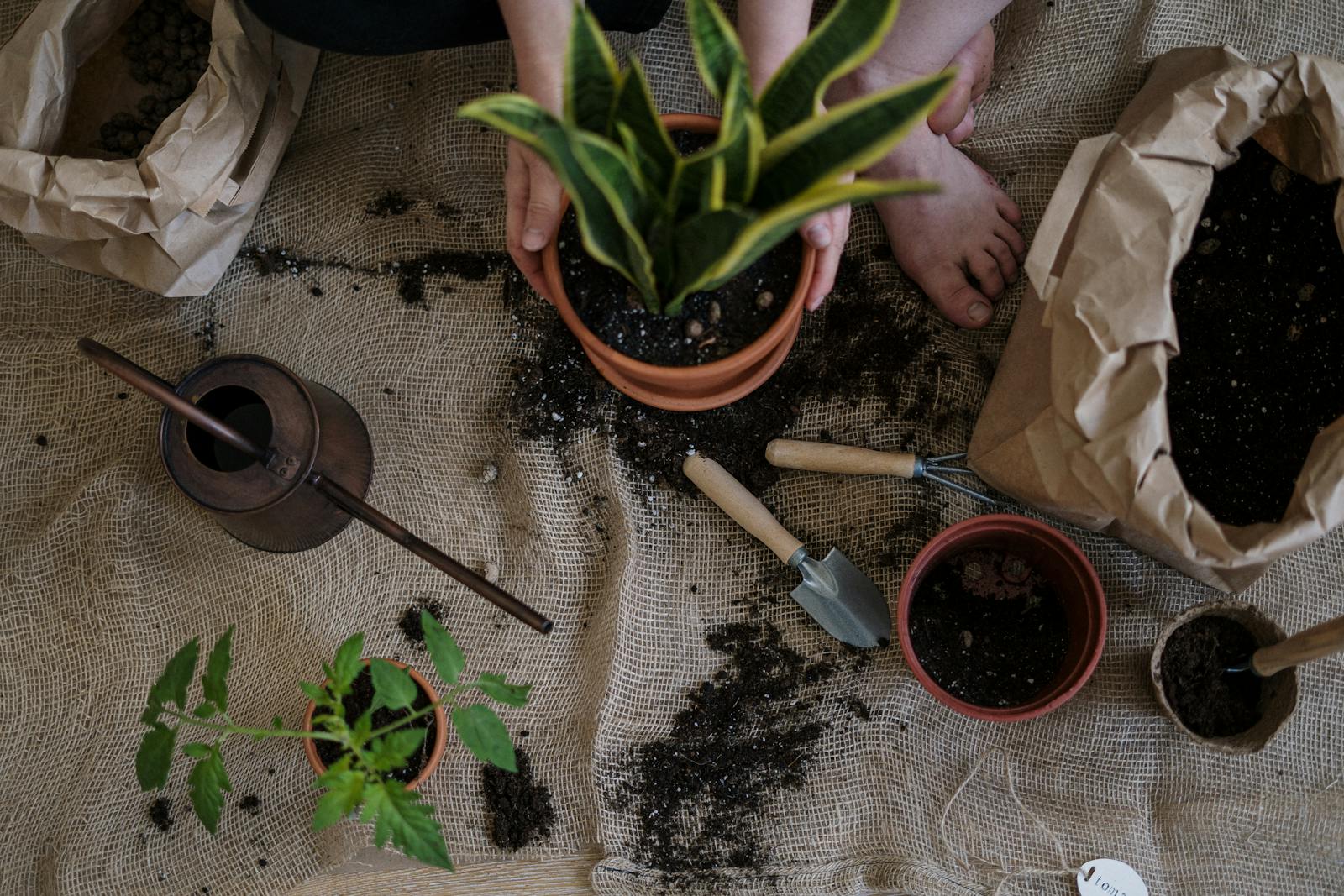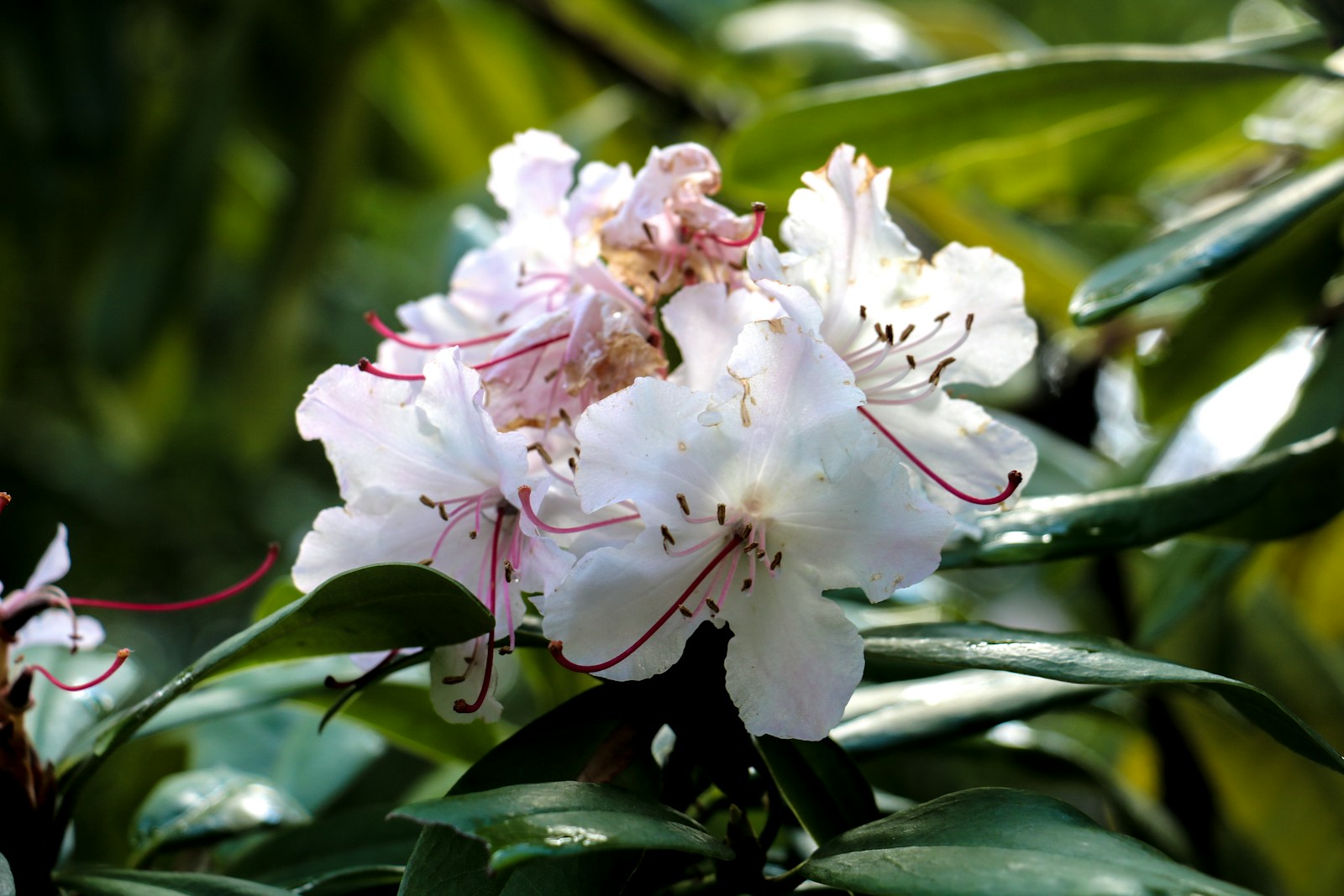Maximize Your Balcony Garden: Smart Solutions for Limited Outdoor Space
Assess Your Balcony’s Sunlight and Exposure
Before planting anything in your balcony garden, observe the light patterns throughout the day. Most plants require 4–6 hours of direct sunlight. South-facing balconies typically get full sun, while east-facing spaces receive gentle morning light. North-facing balconies might be better suited for shade-loving plants like ferns or hostas.
Wind exposure is another factor—high-rise balconies may experience gusty conditions that can damage delicate plants. Use windbreaks like bamboo screens or fabric barriers. Consider waterproof flooring and check your building’s weight restrictions if you plan to add large containers.
Understanding these environmental factors helps you select plants and plan layouts that thrive in your unique balcony garden space.
Choose the Right Containers for Limited Space
Container choice is crucial for a successful balcony garden. Opt for lightweight materials like plastic, resin, or grow bags if your balcony has weight limits. Self-watering containers reduce maintenance and prevent overwatering—ideal for busy gardeners or sunny spots.
Use vertical planters, railing boxes, and stackable pots to save floor space while adding greenery. Hanging baskets and wall-mounted systems expand growing areas without cluttering walkways. Ensure every container has drainage holes and a tray to catch excess water to protect flooring.
Smart container selection allows you to garden vertically, layer plants effectively, and create a lush oasis without overcrowding.
Prioritize Edible and Multi-Purpose Plants
Maximize your balcony garden’s utility by growing plants that are both beautiful and functional. Herbs like basil, thyme, parsley, and mint thrive in pots and enhance your cooking. Dwarf vegetables such as cherry tomatoes, peppers, and lettuce grow well in containers with minimal space.
Choose multi-purpose plants—calendula for beauty and skincare, nasturtiums for edible flowers and pest deterrence, or lavender for fragrance and pollinators. Grow compact fruit like strawberries or dwarf citrus in larger planters.
By combining form and function, you create a balcony garden that provides fresh produce, enhances your meals, and boosts your well-being.
Design with Vertical Gardening Techniques
Vertical gardening is essential for making the most of your balcony garden. Install wall-mounted racks, trellises, or pocket planters to grow herbs, greens, or trailing flowers vertically. Stackable tower gardens and modular systems work well on balconies with limited width but decent height clearance.
Climbing plants like pole beans, cucumbers, and sweet peas thrive on trellises and screens. This not only saves space but also adds privacy and shade. Use wire grids or hanging shelves to layer planters attractively and keep them within reach for care and harvesting.
Vertical gardening transforms blank walls into lush green canvases, maximizing yield in a compact footprint.
Incorporate Smart Watering Solutions
Efficient watering is critical in a balcony garden where containers dry out quickly. Consider self-watering pots, which maintain consistent moisture levels with minimal effort. Drip irrigation kits with timers offer automated watering that conserves water and supports healthy root development.
Water early in the morning to minimize evaporation, and use mulch or pebbles on soil surfaces to retain moisture. Keep a watering can handy if you prefer manual watering—balcony gardens benefit from regular checks, especially in warm weather.
Smart watering systems reduce maintenance and help your plants thrive, even when you’re short on time or away for the weekend.
Optimize Layout with Smart Furniture and Zoning
Creating defined zones in your balcony garden maximizes both comfort and functionality. Dedicate one area for lounging, another for growing, and a third for storage. Use slim-profile furniture like foldable tables, hanging chairs, or stackable stools to conserve space while adding comfort.
Opt for multi-use pieces—like a bench with built-in planter boxes or a table with under-shelf storage. Place taller plants at the corners or back to frame the space and draw the eye upward. Leave walking space clear to avoid overcrowding and maintain ease of movement.
Strategic zoning creates a cohesive balcony garden that feels open, stylish, and efficient.
Grow a Balcony Herb Wall for Everyday Use
One of the most rewarding additions to a balcony garden is a vertical herb wall. Mount pocket planters, modular grids, or wall-mounted pots on a sunlit surface. Choose frequently used herbs like basil, oregano, chives, rosemary, and cilantro.
Ensure each plant gets enough light and water—self-watering wall systems work especially well. Arrange herbs by usage or water needs, grouping Mediterranean herbs together and moisture-lovers elsewhere. Harvest often to promote fresh growth and prevent overcrowding.
Herb walls save space and deliver convenience, turning your balcony into a living pantry that’s as beautiful as it is practical.
Use Lightweight Soil and Fertilizer Solutions
Soil weight matters in a balcony garden. Use lightweight potting mixes that contain peat moss, coco coir, and perlite for optimal drainage and reduced load. Avoid heavy topsoil or clay-rich mixtures that retain too much water and add bulk.
Enrich your containers with organic slow-release fertilizers or compost tea. Liquid feeds work well in small spaces, offering quick nutrient absorption. Avoid over-fertilizing—this can harm roots in compact planters.
Balanced, lightweight soil management supports strong plant growth while staying within structural limits, keeping your balcony garden safe and productive.
Add Shade Solutions and Weather Protection
Balconies are often exposed to intense sunlight, rain, or wind. Install shade cloths, roll-down bamboo blinds, or UV-resistant umbrellas to shield sensitive plants from excessive sun. For protection against rain, use transparent covers or awnings that let light in while keeping water off foliage.
Group vulnerable plants under larger pots or furniture for shelter. Windbreaks—like lattice screens or trellises with vines—reduce stress and evaporation. During colder months, use fleece wraps or cloches to protect plants from frost.
Smart weather management ensures your balcony garden remains healthy and visually appealing throughout the year, regardless of conditions.
Create a Mood with Lighting and Decor
Lighting can turn your balcony garden into an inviting retreat at any hour. Use solar-powered string lights, lanterns, or LED planters to illuminate plants and seating areas. Position lights to highlight vertical structures or colorful foliage for visual interest.
Incorporate decorative elements like outdoor rugs, cushions, and weatherproof art. Mirrors can visually expand small spaces, while hanging ornaments add motion and charm. Choose a cohesive color palette to unify the garden’s look.
By blending function and aesthetics, your balcony becomes more than a garden—it transforms into a personal sanctuary rich in style and serenity.
Install a Vertical Trellis for Climbing Plants
A vertical trellis is a practical and stylish way to grow climbing plants in a balcony garden. Attach a wooden lattice, wire grid, or metal frame to a wall or railing. Choose climbers like morning glories, pole beans, or ivy to add greenery and height without using floor space.
Trellises double as privacy screens, creating a cozy atmosphere while shielding your space from neighboring views. They also help control sun exposure and wind. Secure containers at the base and train vines upward using ties or clips.
With minimal effort, a trellis adds structure, shade, and lushness to any balcony garden.
Utilize Corners and Railings for Added Function
In compact spaces, every inch counts. Turn balcony corners into productive zones by placing tiered stands, corner shelves, or large pots filled with bushy plants or dwarf trees. These areas are perfect for shade-tolerant varieties that add density and depth to your design.
Use railing planters to grow herbs, trailing flowers, or greens at eye level. This not only saves space but also enhances the garden’s aesthetic from inside and outside. Make sure railing containers are securely fastened to withstand wind and weight.
Smart corner and railing use expands planting space without crowding your main walkway or seating area.
Include a Compact Composting Solution
Composting on a balcony may sound challenging, but it’s entirely possible with the right system. Bokashi bins, worm composters (vermicomposting), or compact sealed containers work well for small-scale organic waste management. Place them under a bench or in a shaded corner to reduce odor and sun exposure.
Use the resulting compost to enrich your container soil and reduce dependence on store-bought fertilizers. This closed-loop system makes your balcony garden more sustainable while reducing kitchen waste.
Compact composting turns your outdoor space into a truly self-sufficient, eco-friendly garden—no backyard required.
Adjust Plant Choices by Season
Keep your balcony garden thriving all year by rotating seasonal plants. In spring, focus on cool-season herbs and greens like lettuce and cilantro. Summer is ideal for tomatoes, peppers, and bush beans. Come fall, swap in pansies, kale, or ornamental cabbage. In winter, opt for evergreens, hardy herbs, or frost-tolerant succulents.
Use rolling containers or movable racks to reposition plants for optimal sun exposure during changing seasons. Adjust watering and feeding schedules accordingly. Seasonal transitions bring visual refreshment and ongoing productivity to your balcony garden, turning it into a year-round living space.
Make It Your Own with Personalized Touches
Your balcony garden should reflect your personality and lifestyle. Incorporate handmade plant markers, painted pots, or upcycled furniture. Add wind chimes, custom signage, or themed decor to create a cohesive vibe—whether boho, minimalist, or cottage-inspired.
Don’t be afraid to experiment. Try unique container types like teacups for succulents or crates for herbs. Use wall art or hanging mobiles to give the garden dimension. Personal touches transform your garden into a creative extension of your home.
When your balcony garden reflects who you are, it becomes not just a green space—but your favorite outdoor room.
Frequently Asked Questions
What plants grow best in a balcony garden?
Plants that thrive in containers and limited sunlight are ideal for a balcony garden. Herbs like basil, thyme, parsley, and mint do well in pots. Vegetables such as cherry tomatoes, lettuce, radishes, and peppers also flourish in compact spaces. For visual appeal, consider flowers like petunias, geraniums, and marigolds. Succulents and dwarf citrus trees can add interest and greenery without requiring too much space. Choose plants based on your balcony’s light exposure and climate, and always use quality potting soil and containers with drainage to ensure healthy growth in a small outdoor area.
How can I make the most of my small balcony garden space?
To maximize a small balcony garden, use vertical space with hanging planters, trellises, or wall-mounted containers. Select multi-purpose furniture, like benches with built-in planters, and opt for foldable or stackable pieces to save room. Group plants by height and water needs, and place taller varieties at the back. Use railing planters and corner shelves to expand planting areas. Incorporating mirrors or light-colored decor can also visually enlarge the space. These strategies help you create a lush, organized garden without overwhelming your limited outdoor square footage.
Can I grow food in my balcony garden?
Yes, balcony gardens are perfect for growing food in containers. Many vegetables and herbs thrive in small spaces with proper sunlight and care. You can grow lettuce, spinach, kale, cherry tomatoes, peppers, radishes, and even dwarf fruit trees. Herbs like basil, cilantro, and rosemary are compact and productive. Use lightweight containers with drainage, quality potting mix, and organic fertilizer. With 4–6 hours of sunlight and consistent watering, your balcony garden can yield fresh, nutritious produce throughout the year—even in urban settings.
What are the best containers for a balcony garden?
The best containers for a balcony garden are lightweight, durable, and designed for proper drainage. Resin, plastic, fabric grow bags, and hanging baskets are popular choices due to their portability and water retention. Self-watering planters are ideal for sunny balconies, reducing maintenance needs. Choose containers with saucers to protect your flooring. Vertical and stackable planters maximize growing space. Make sure the container size fits the plant’s root system—larger vegetables need deeper pots, while herbs thrive in shallower ones. With the right containers, you’ll grow healthier plants and make the most of your limited space.
How do I maintain a balcony garden year-round?
Maintaining a balcony garden year-round requires seasonal planning. In spring and summer, water frequently, fertilize monthly, and prune regularly. Switch to heat-tolerant plants during summer and provide shade as needed. In fall, transition to cool-weather crops and mulch to retain warmth. Winter care includes moving tender plants indoors or wrapping pots with insulating material. Use evergreen plants or hardy herbs to maintain greenery. Adjust watering and light access throughout the year, and regularly clean containers and tools to prevent disease. Year-round attention ensures your balcony garden stays vibrant in every season.
© 2025 GardeningandDecor.com. All rights reserved.



